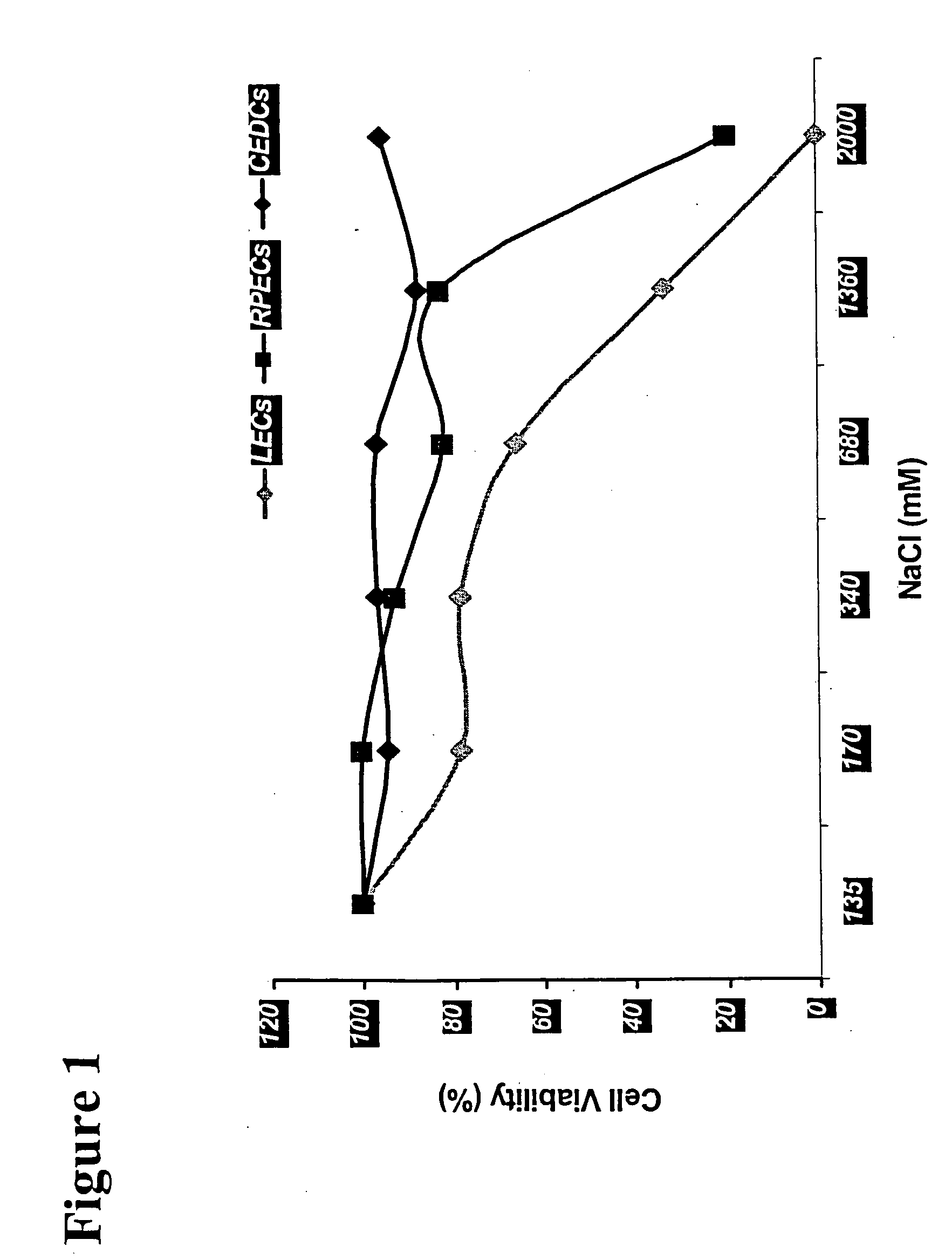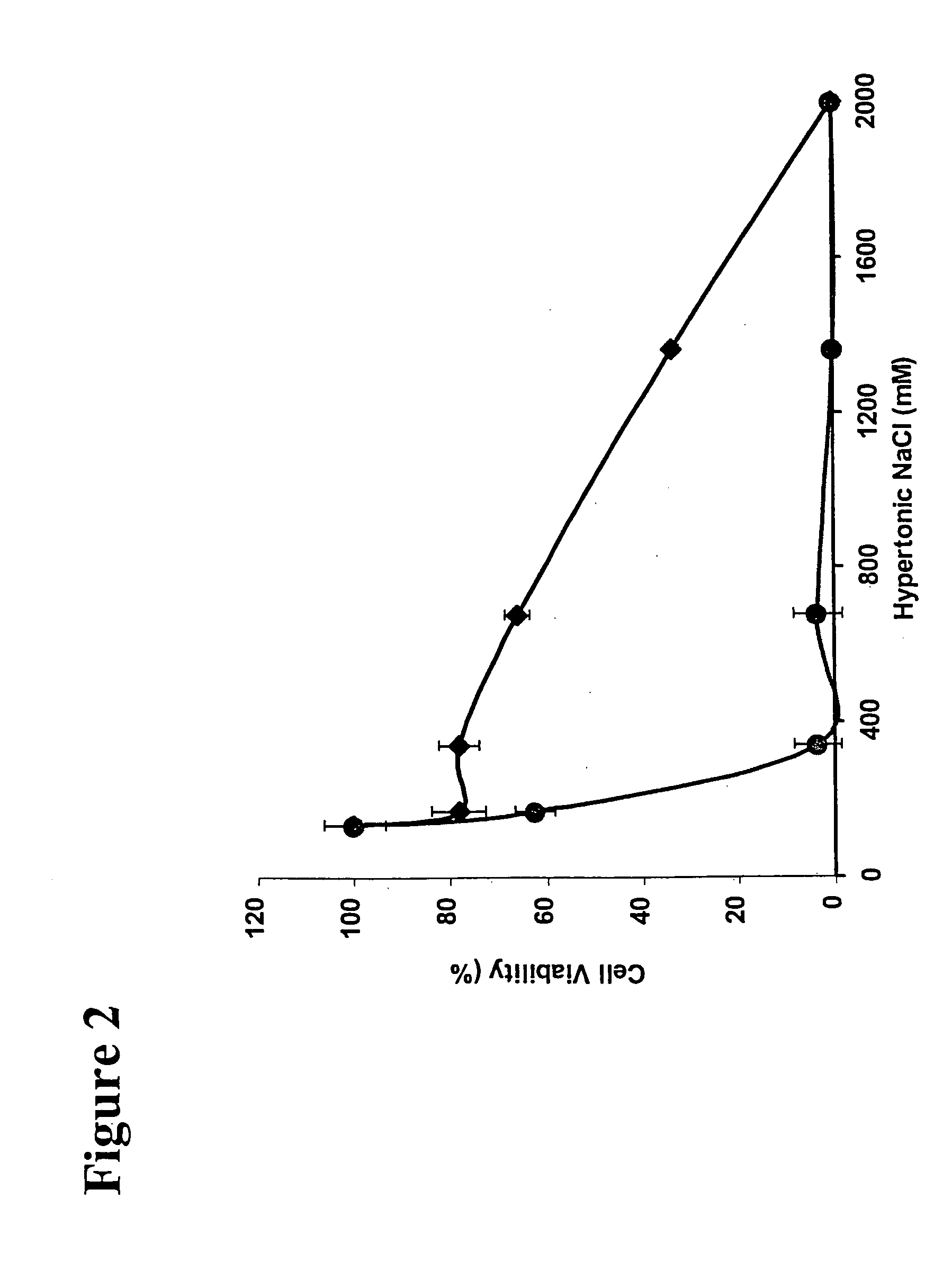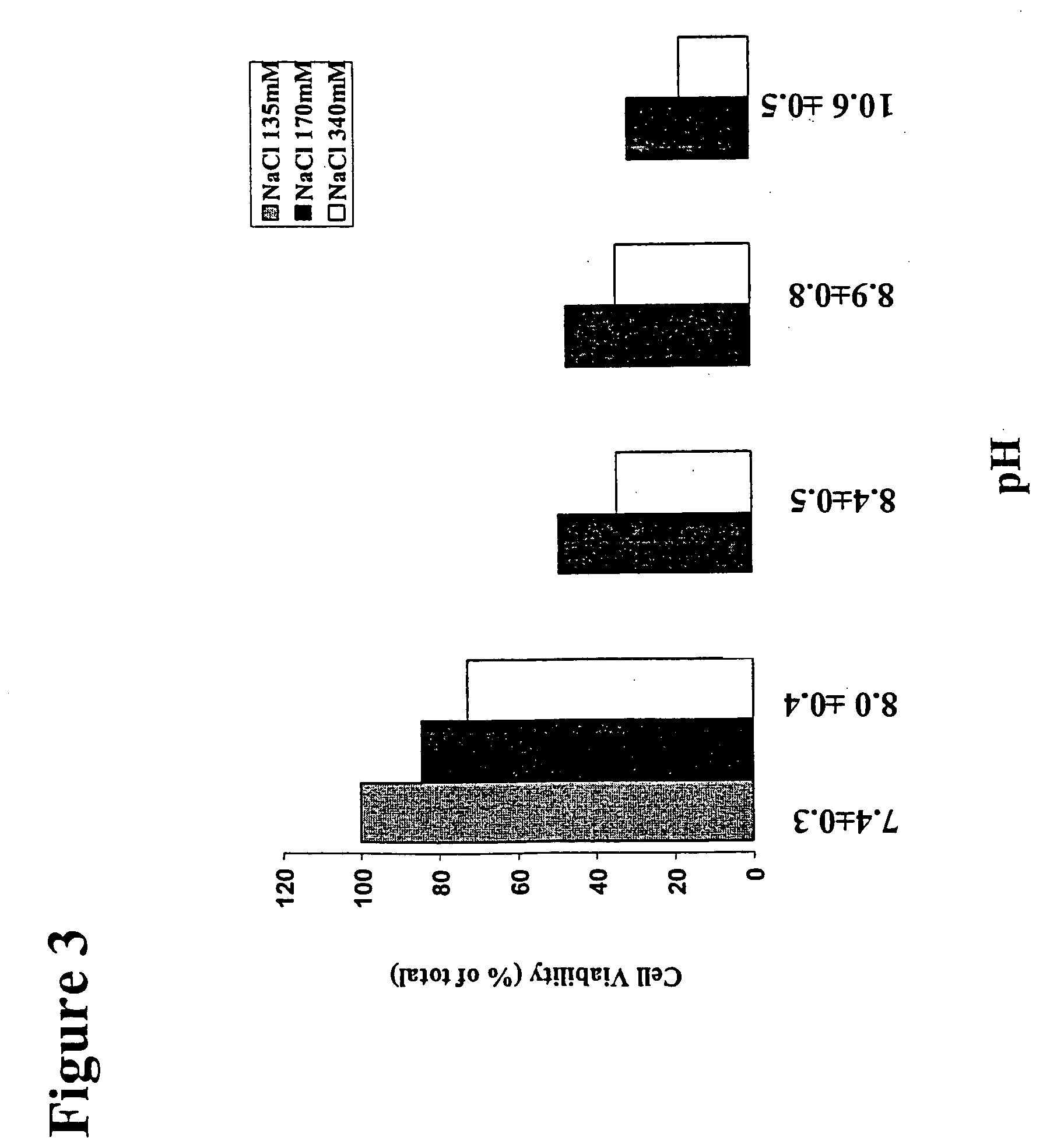Treatment solution and method for preventing posterior capsular opacification by selectively inducing detachment and/or death of lens epithelial cells
a lens epithelial cell and treatment solution technology, applied in the direction of heterocyclic compound active ingredients, drug compositions, prosthesis, etc., can solve the problems of cell detachment and/or death, and achieve the effects of preventing pco, normal cell volume, and higher solute concentration
- Summary
- Abstract
- Description
- Claims
- Application Information
AI Technical Summary
Benefits of technology
Problems solved by technology
Method used
Image
Examples
example 2
[0155] Confluent monolayers of LECs are given three washes with Hank's Balanced Salt Solutions (HBSS) to remove FCS before the experiment. LECs are prepared in 96-well culture plates as in Example 1. These cells are exposed for about five to ten minutes to 200 μl / well of treatment solutions comprising increasing concentrations (˜135 mM, ˜170 mM, ˜340 mM, ˜680 mM, ˜1360 mM and ˜2000 mM) of NaCl (an osmolyte) in the presence and the absence of 30 μM frusemide (a co-transport interference agent, an ion transport mechanism interference agent). The treatment solutions have a pH of 8.0±0.4. After treatment, the treated cells are thoroughly washed, and cultured with fresh media. The viability of the treated LECs was determined by MTT assay 12-24 hours post-treatment as described in Example 1.
[0156] After this treatment, the same phenomenon of cell shrinkage and detachment as observed in Comparative Example 1 also occurs in the presence of frusemide, but the changes are much more dramatic....
example 5
[0163] Confluent monolayers of LECs and RPECs are prepared as described in Example 1. These cells are exposed for about ten minutes to 200 μl / well of treatment solutions comprising: (i) ≦200 mM hyperosmotic NaCl; (ii) increasing concentrations (10 μM, 30 μM, 60 μM, 90 μM, and 120 μM) of co-transport interference agent, frusemide, and (iii) 3 μl of 5N NaOH.
[0164] The treatment solutions containing frusemide are prepared as described in Example 2, by diluting stock solution of frusemide with ≦200 mM hyperosmotic NaCl solution (prepared as described in Example 1). For example, to get a hyperosmotic NaCl solution with 60 μM frusemide, 10 μL of frusemide stock solution is added to 5 mL hyperosmotic NaCl solution. The pH of the solutions is adjusted with 3 μl of 5N NaOH.
[0165] The viability of the treated cells is determined by MTT assay 12 to 24 hours post-treatment as described in Example 1. Cell viability of LECs (circles) and RPECs (diamonds) are depicted in FIG. 5. Each point repre...
example 6
[0166] Confluent monolayers of LECs, CEDCs and RPECs are prepared as described in Example 1. These cells are exposed for about ten minutes to 200 μl / well of treatment solutions comprising: (i) ≦200 mM hyperosmotic NaCl, (ii) increasing concentrations (14 μM, 28 μM, 56 μM, 112 μM, and 224 μM) of bumetanide, a co-transport interference agent, and (iii) 3 μl of 5N NaOH.
[0167] The treatment solutions containing Bumetanide are prepared as follows. A stock solution of 1.4 M bumetanide is prepared. A second stock solution of 14 mM bumetanide is then made by diluting 1 μL of the 1.4 M bumetanide solution with 1 mL hyperosmotic NaCl solution (prepared as described in Example 1). The final desired concentrations of bumetanide are obtained by diluting the 14 mM bumetanide stock solution with NaCl solution to get concentrations of approximately 0 M (control) 14 μM, 28 μM, 56 μM, 112 μM, and 224 μM, respectively. The pH of the solutions is adjusted with 3 μL of 5 N NaOH.
[0168] The viability of...
PUM
| Property | Measurement | Unit |
|---|---|---|
| Molar density | aaaaa | aaaaa |
| Molar density | aaaaa | aaaaa |
| Molar density | aaaaa | aaaaa |
Abstract
Description
Claims
Application Information
 Login to View More
Login to View More - R&D
- Intellectual Property
- Life Sciences
- Materials
- Tech Scout
- Unparalleled Data Quality
- Higher Quality Content
- 60% Fewer Hallucinations
Browse by: Latest US Patents, China's latest patents, Technical Efficacy Thesaurus, Application Domain, Technology Topic, Popular Technical Reports.
© 2025 PatSnap. All rights reserved.Legal|Privacy policy|Modern Slavery Act Transparency Statement|Sitemap|About US| Contact US: help@patsnap.com



